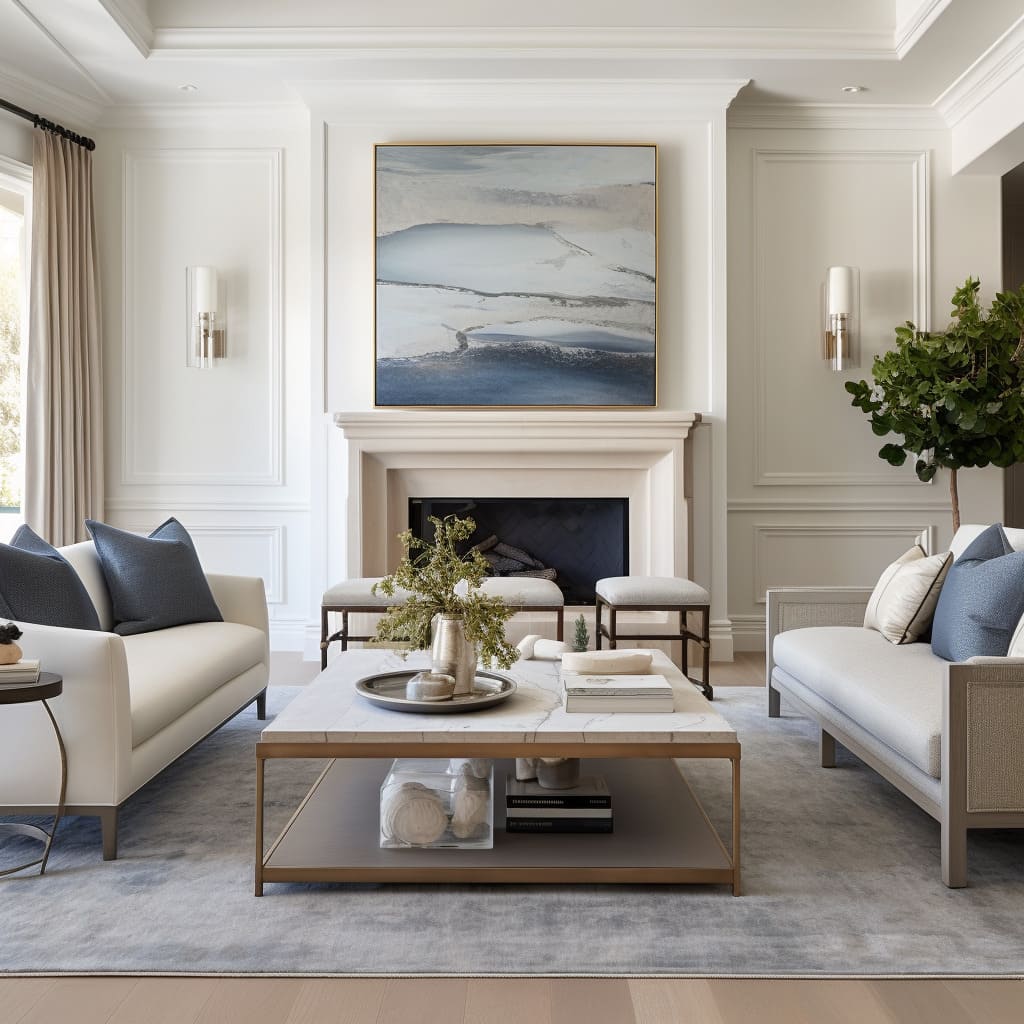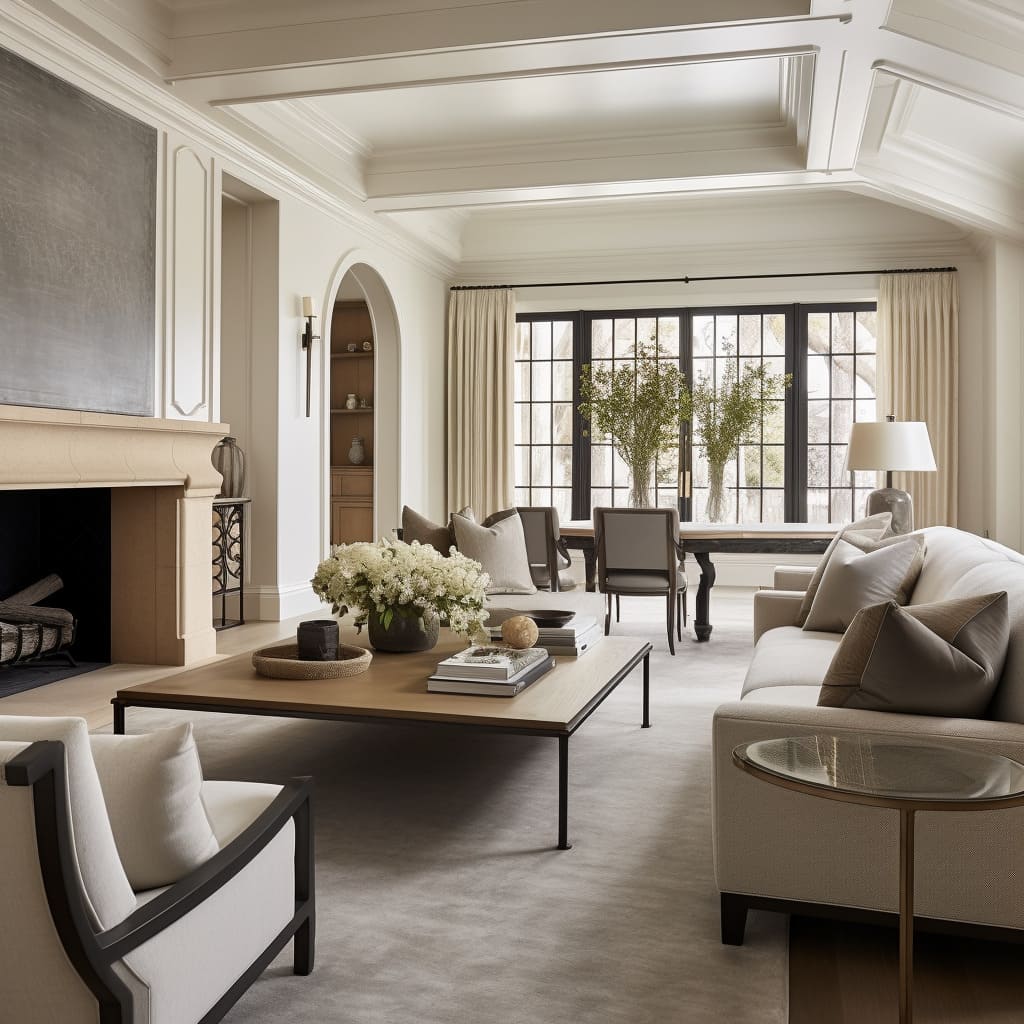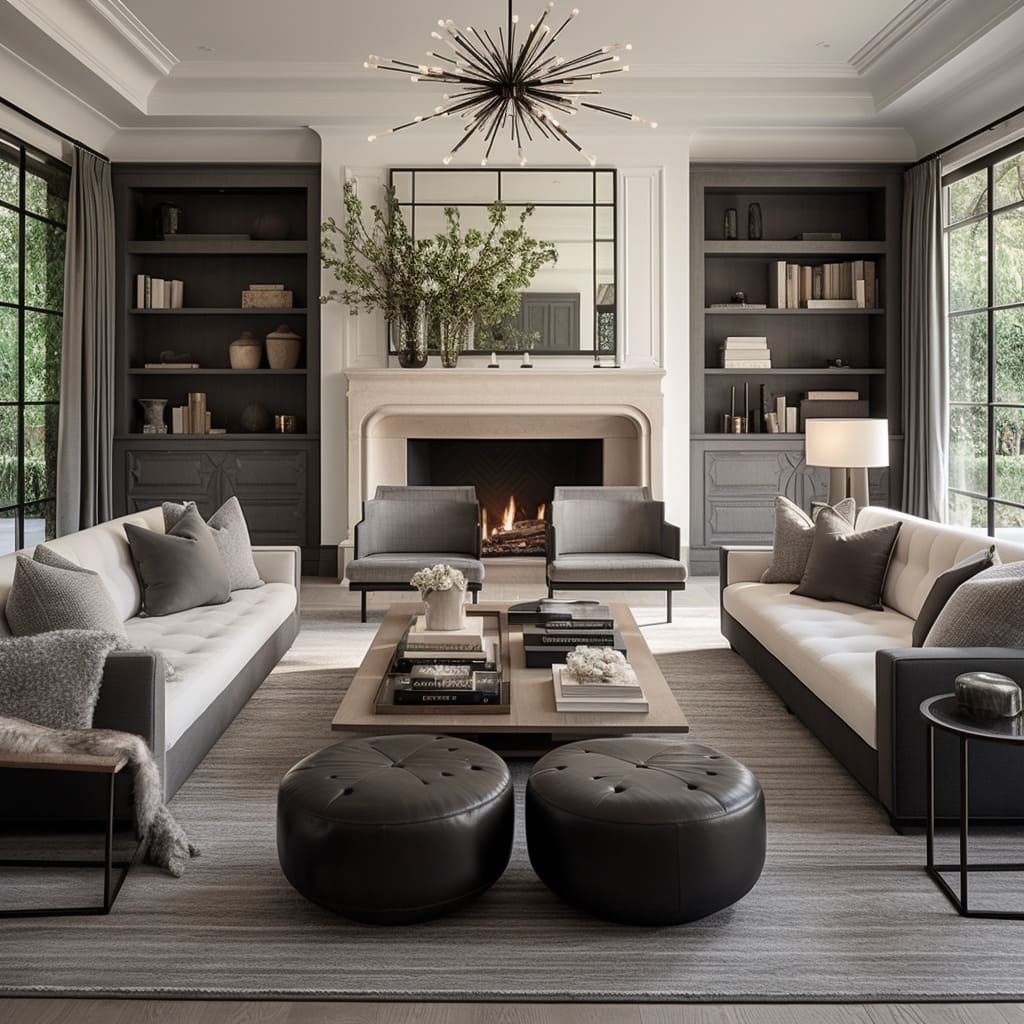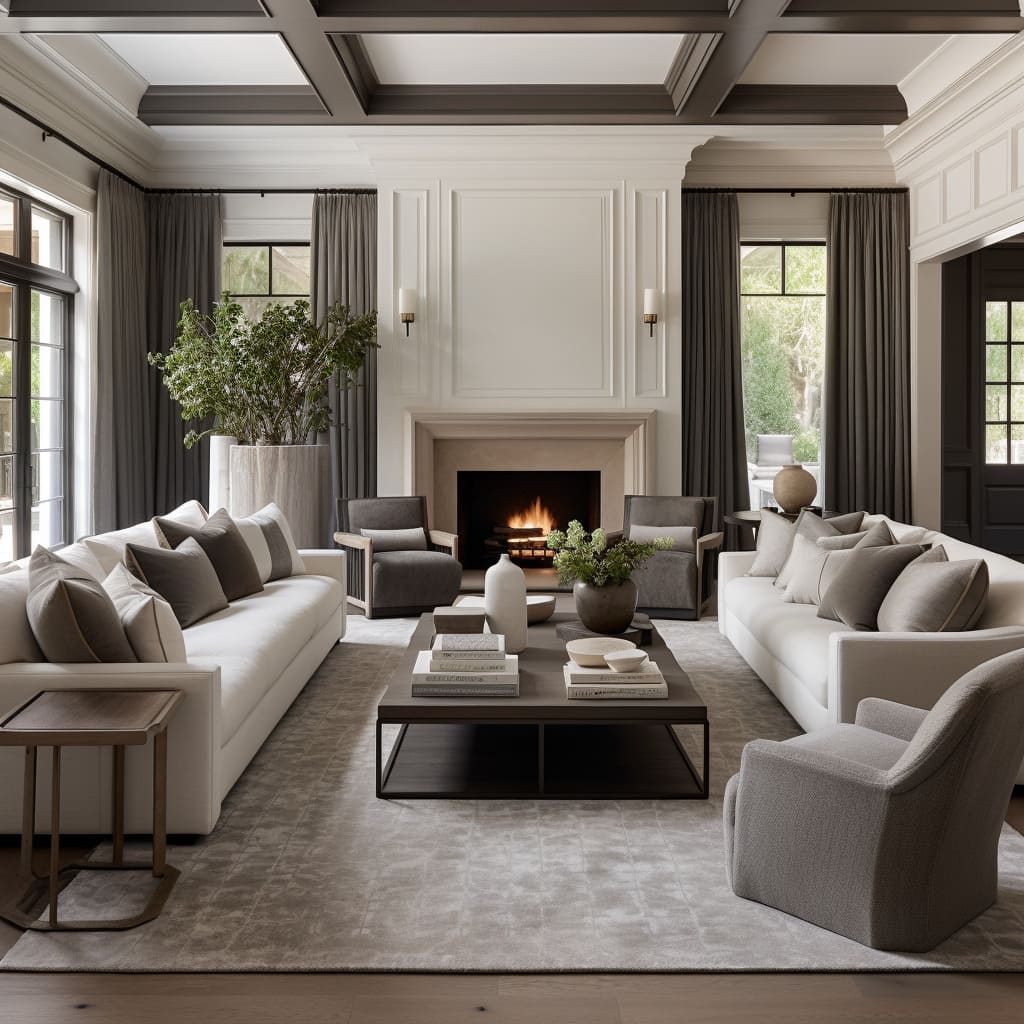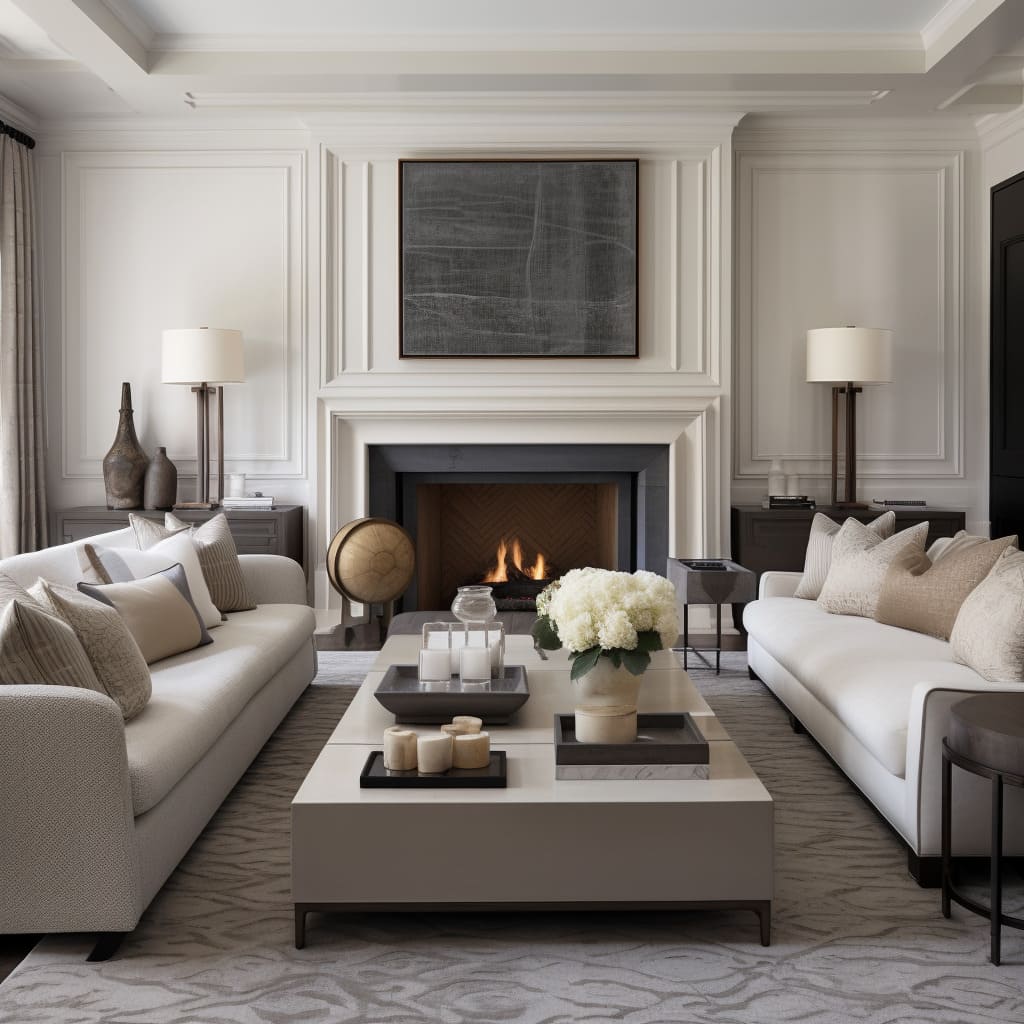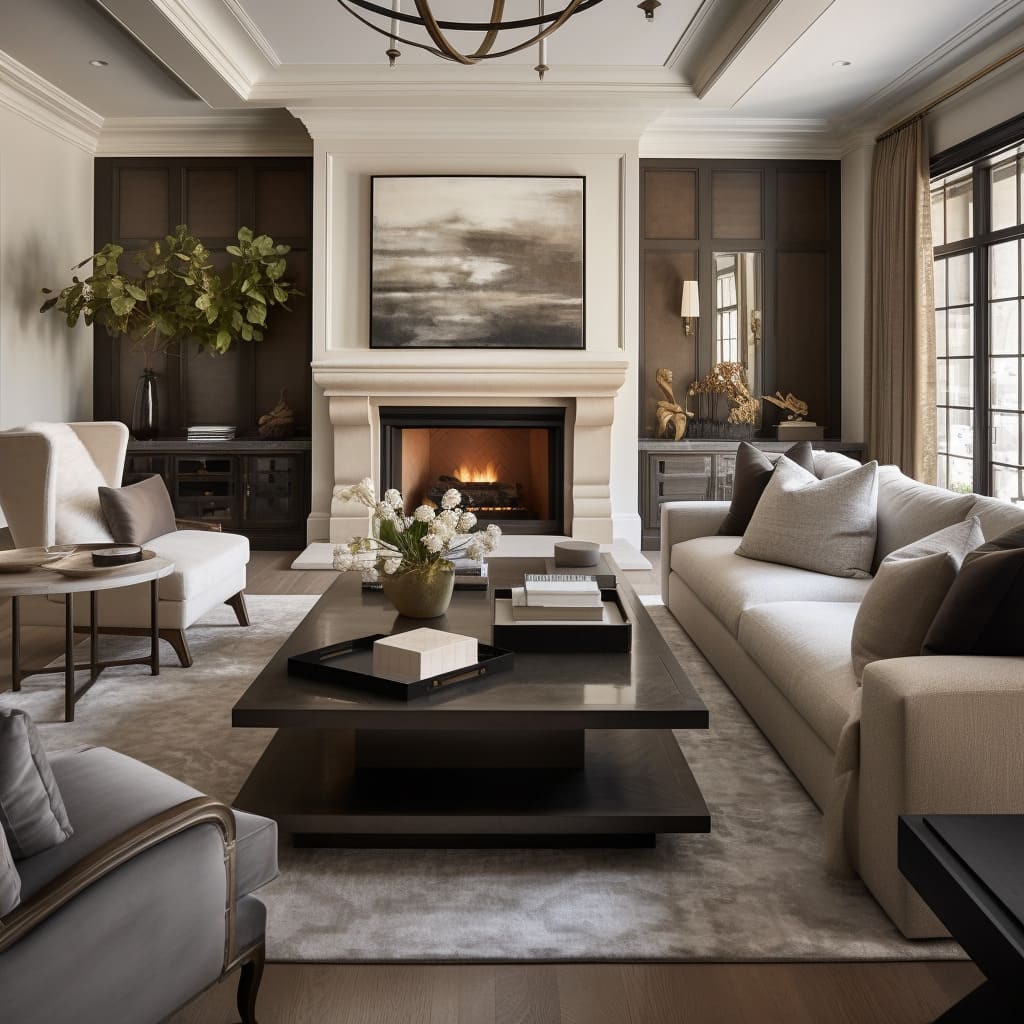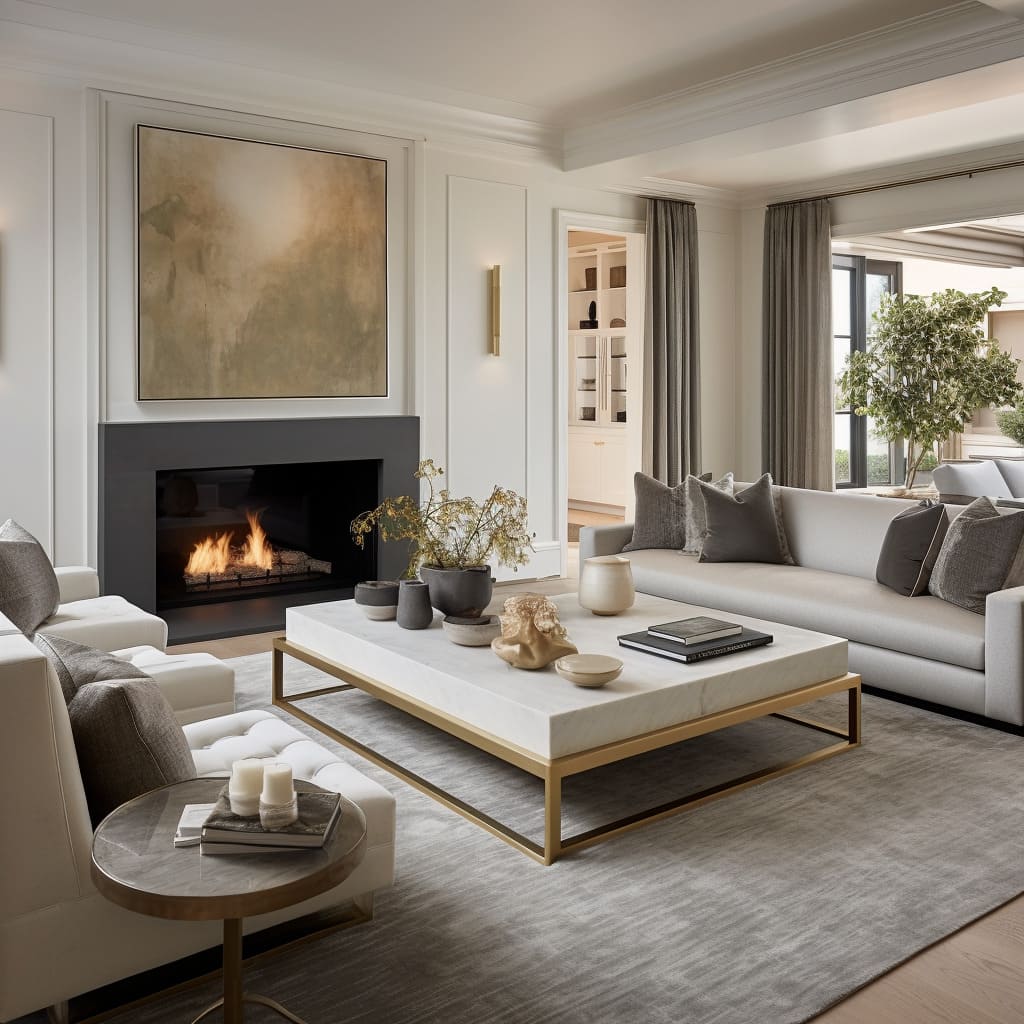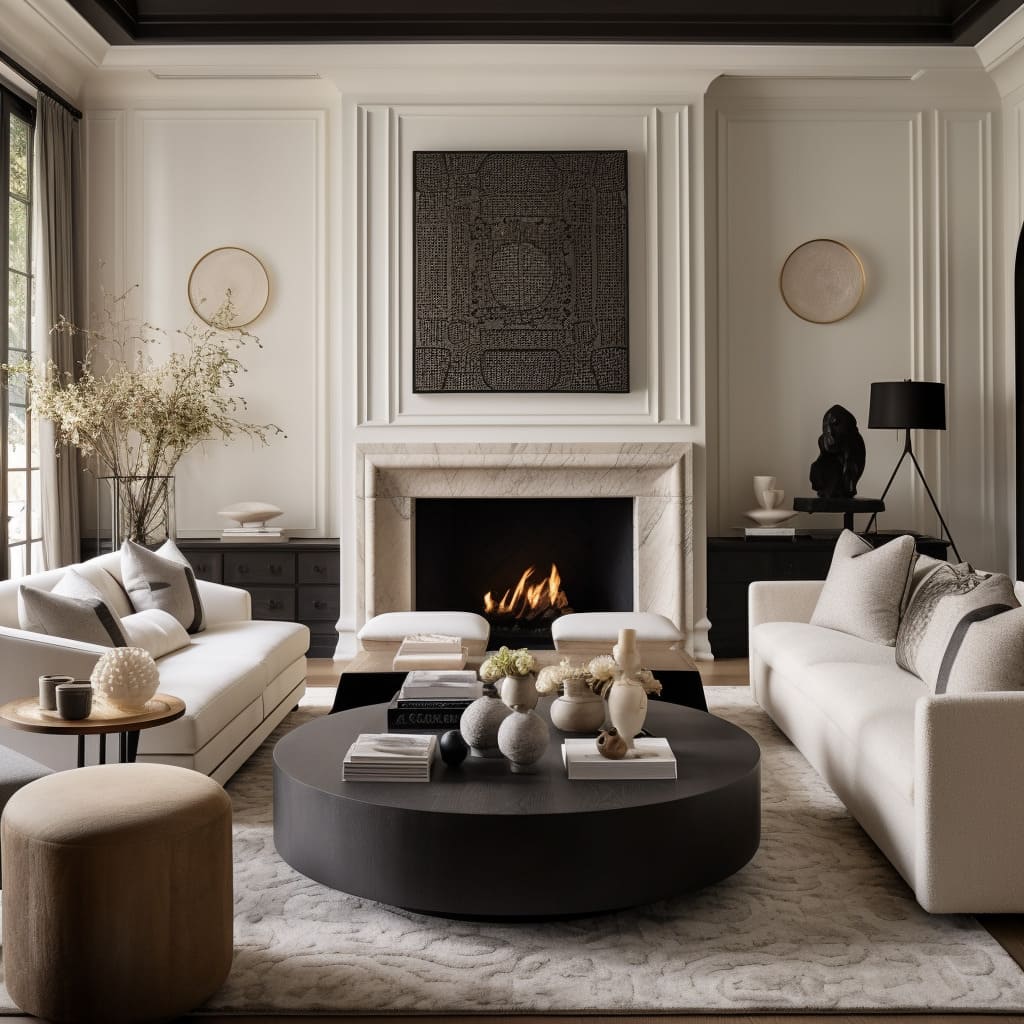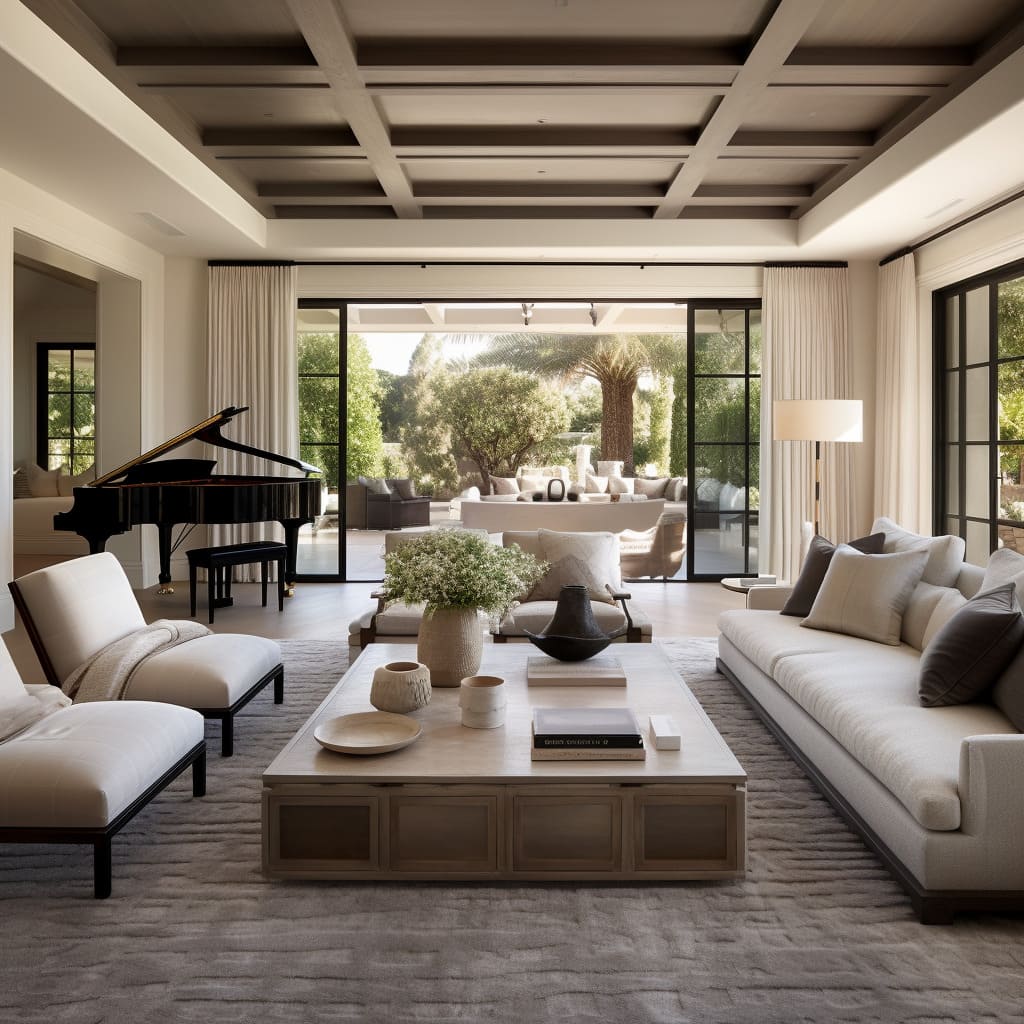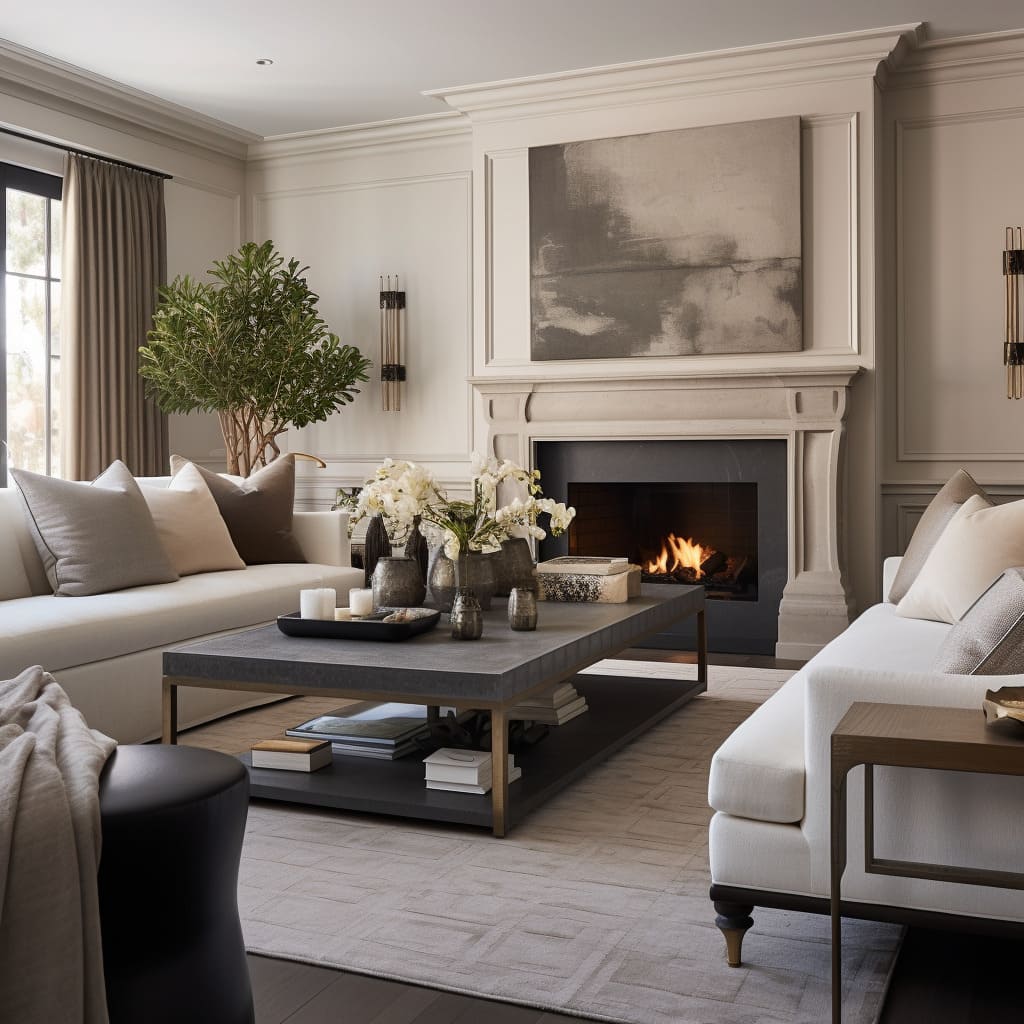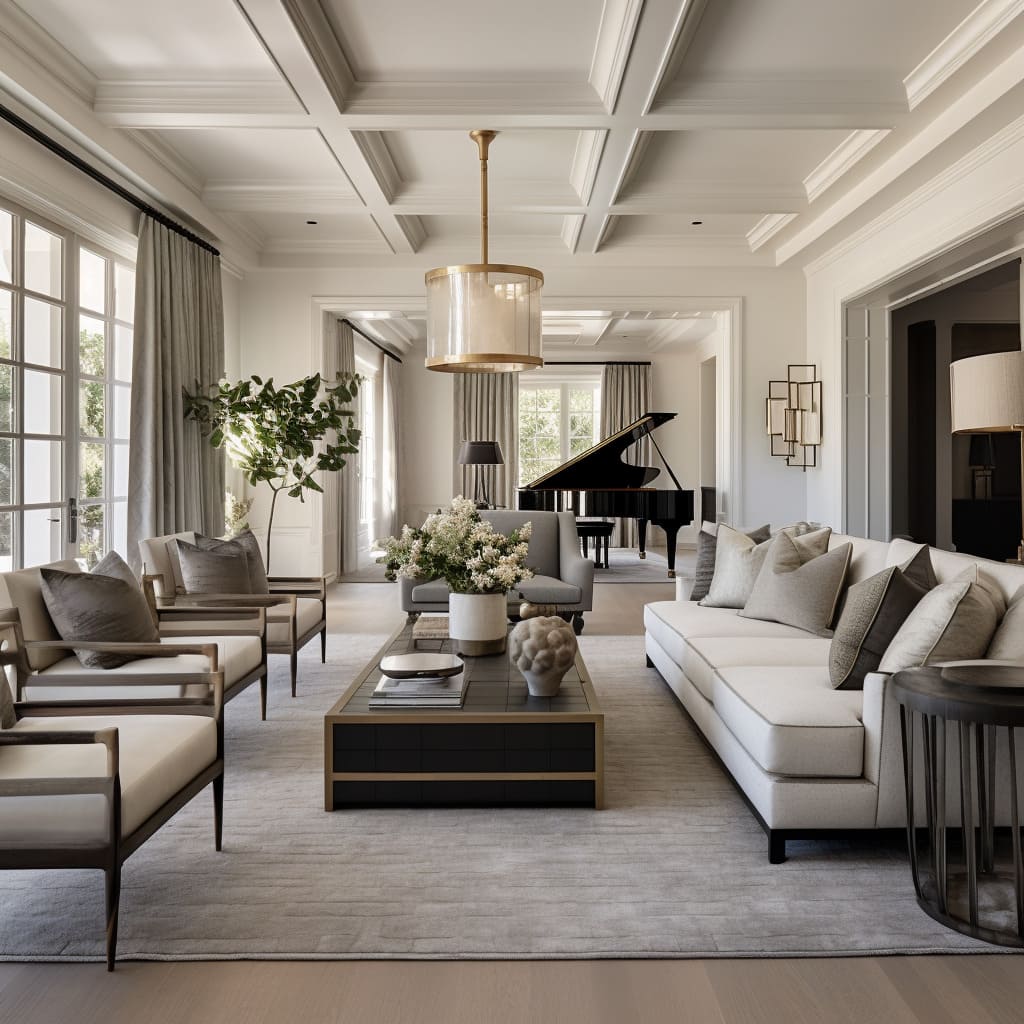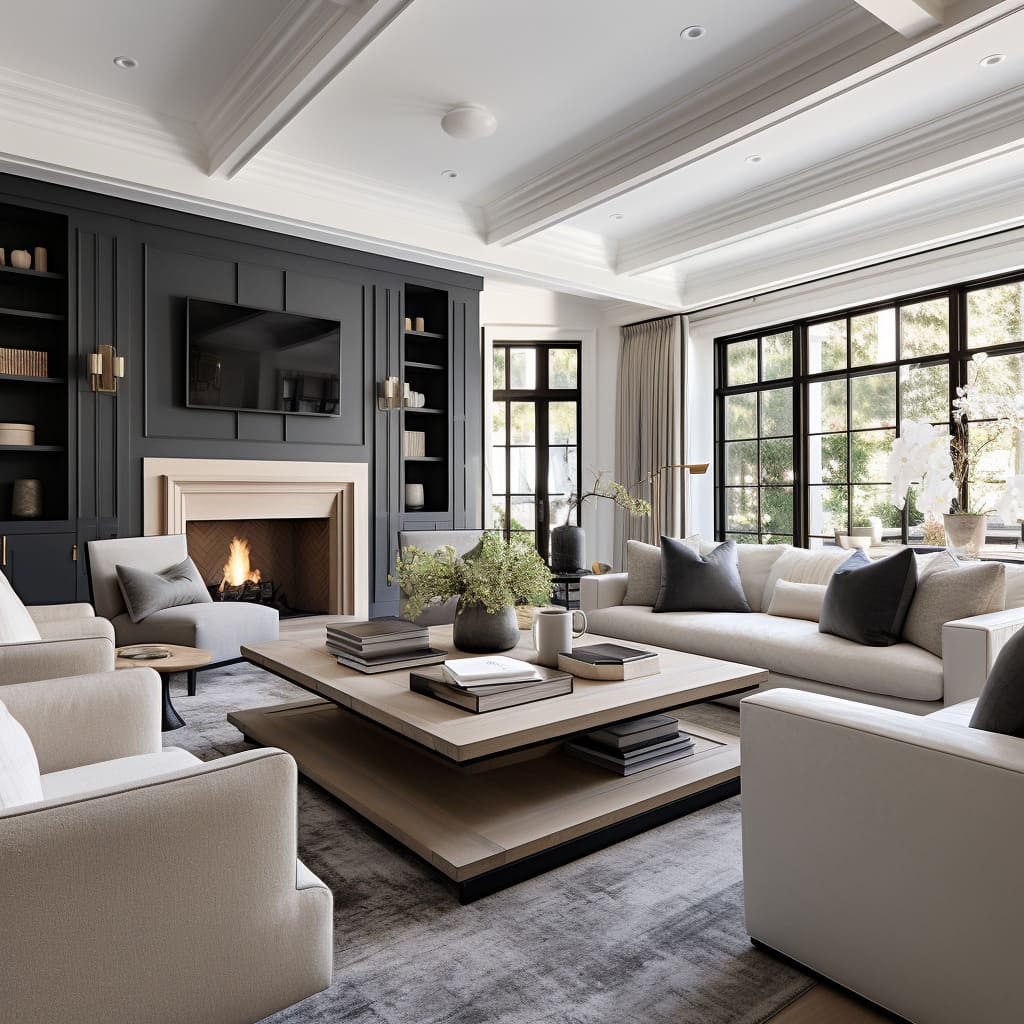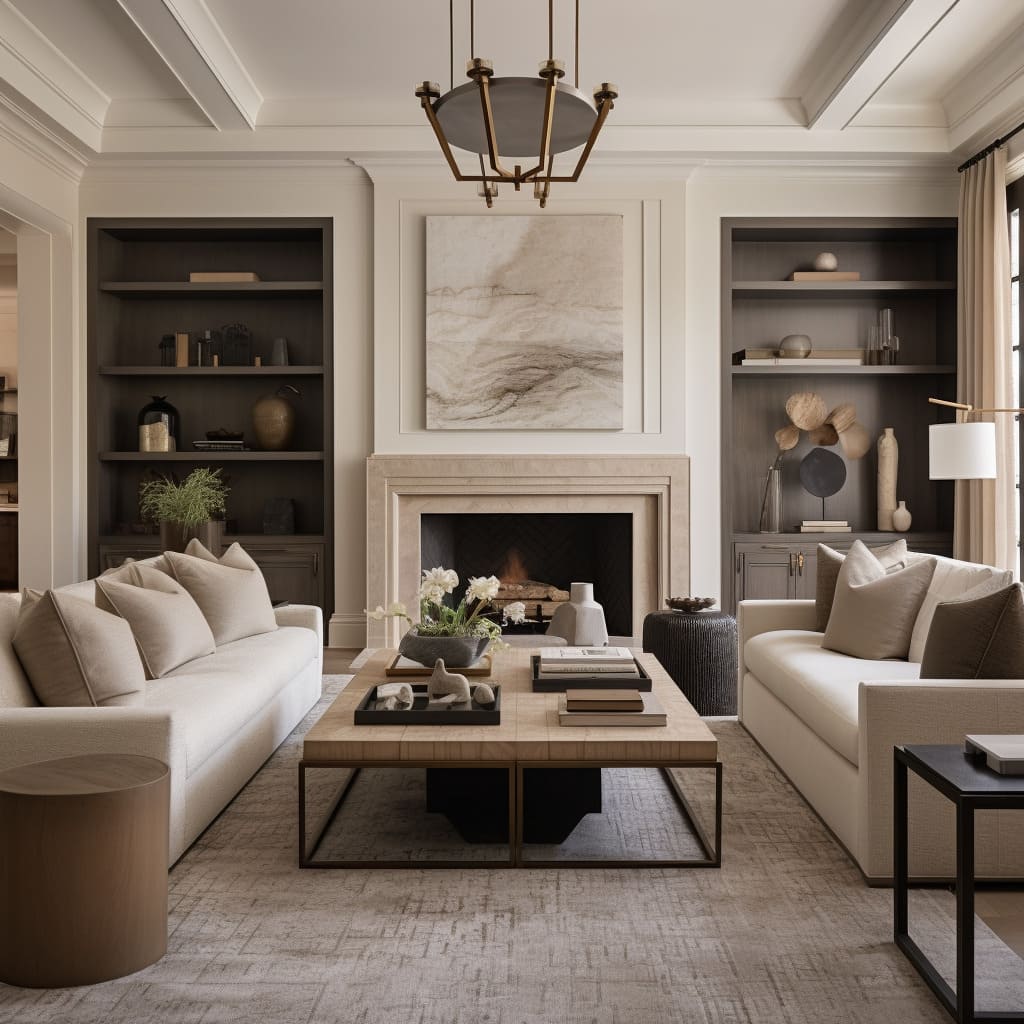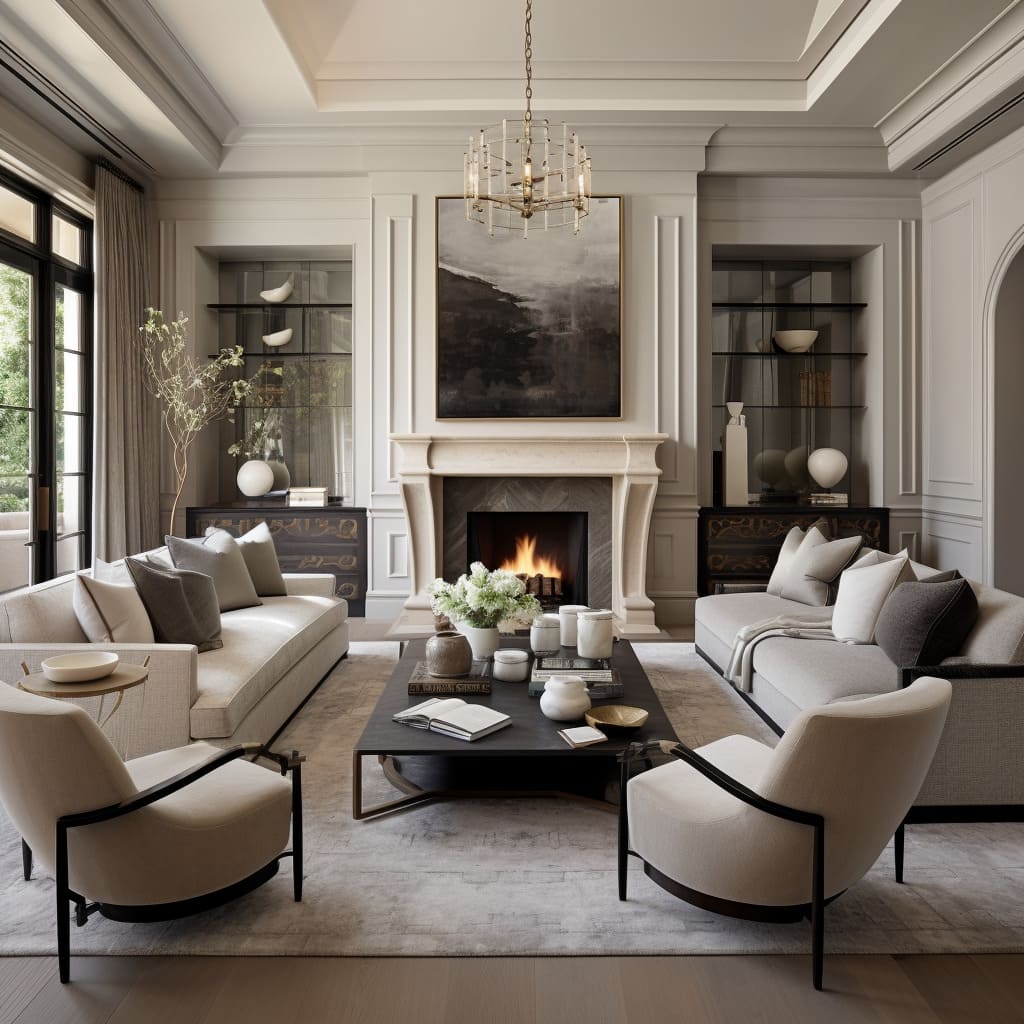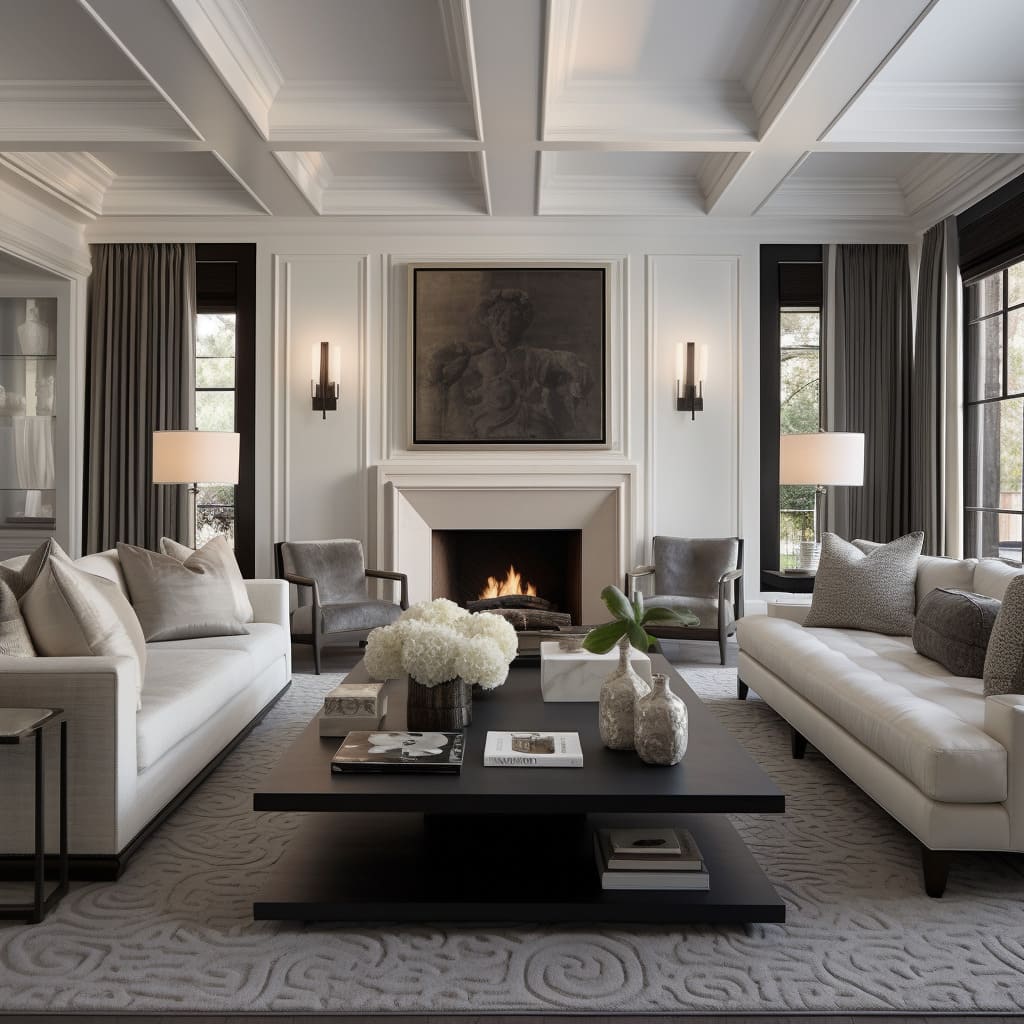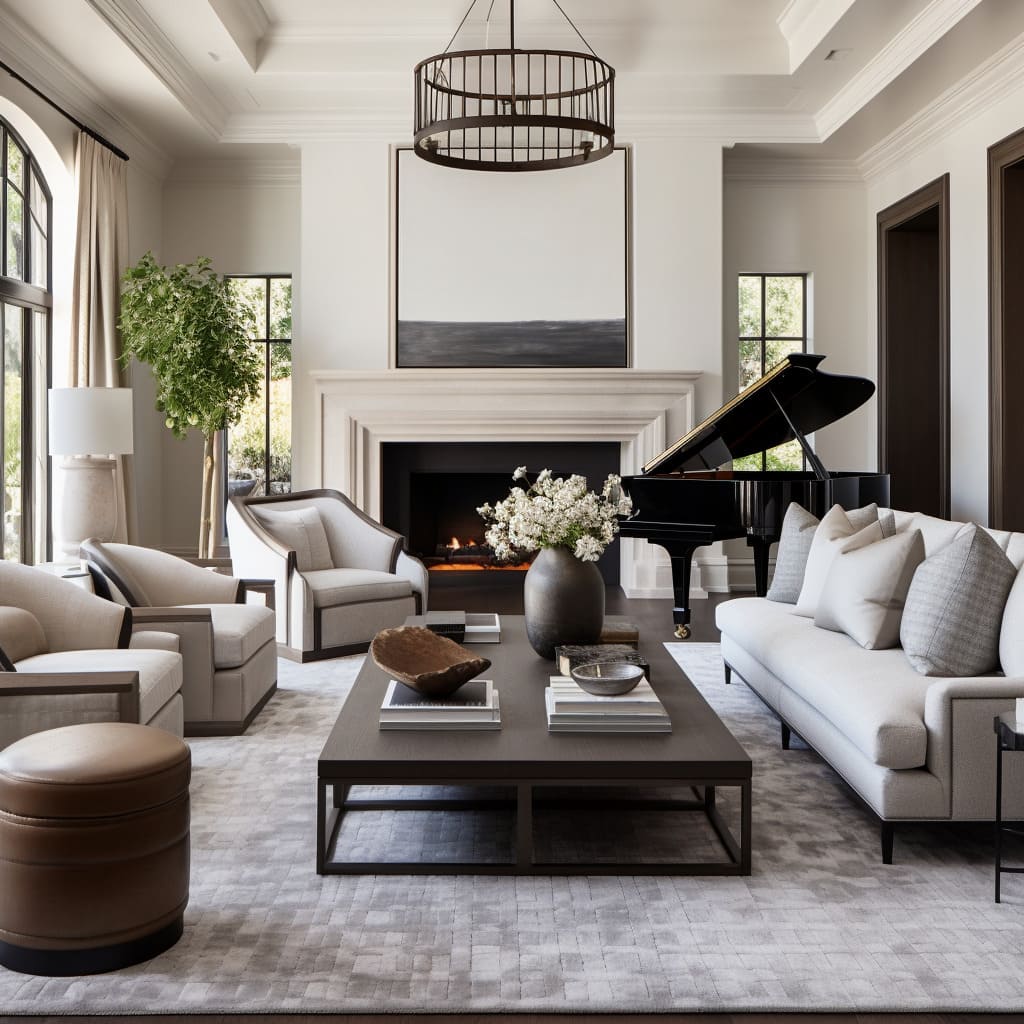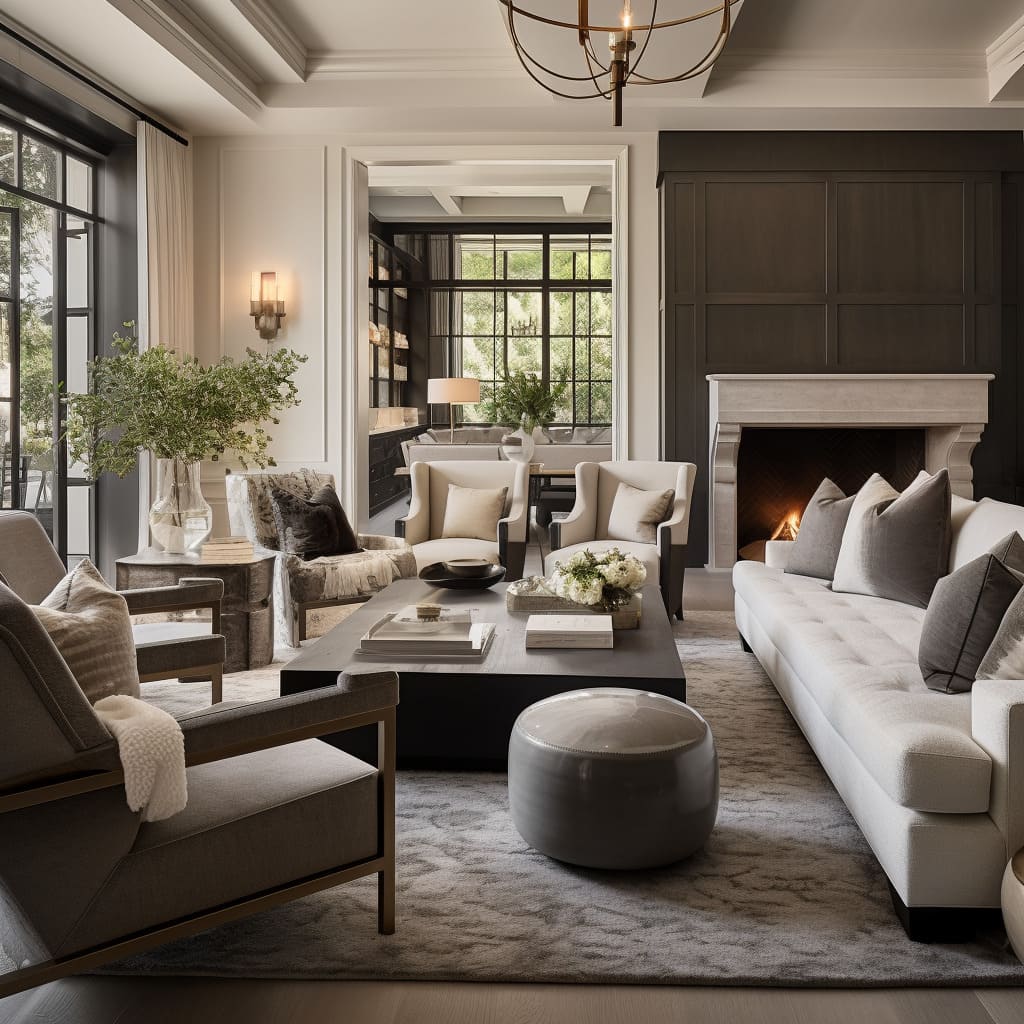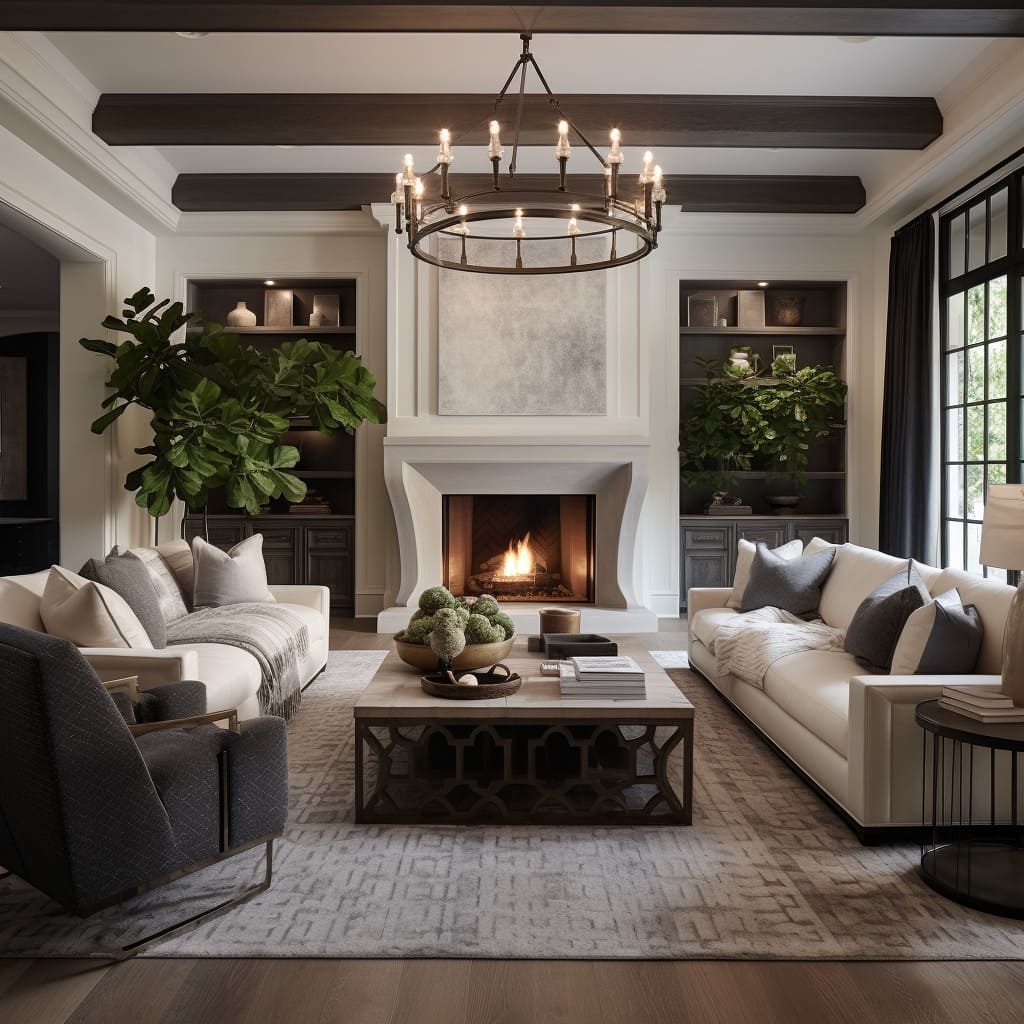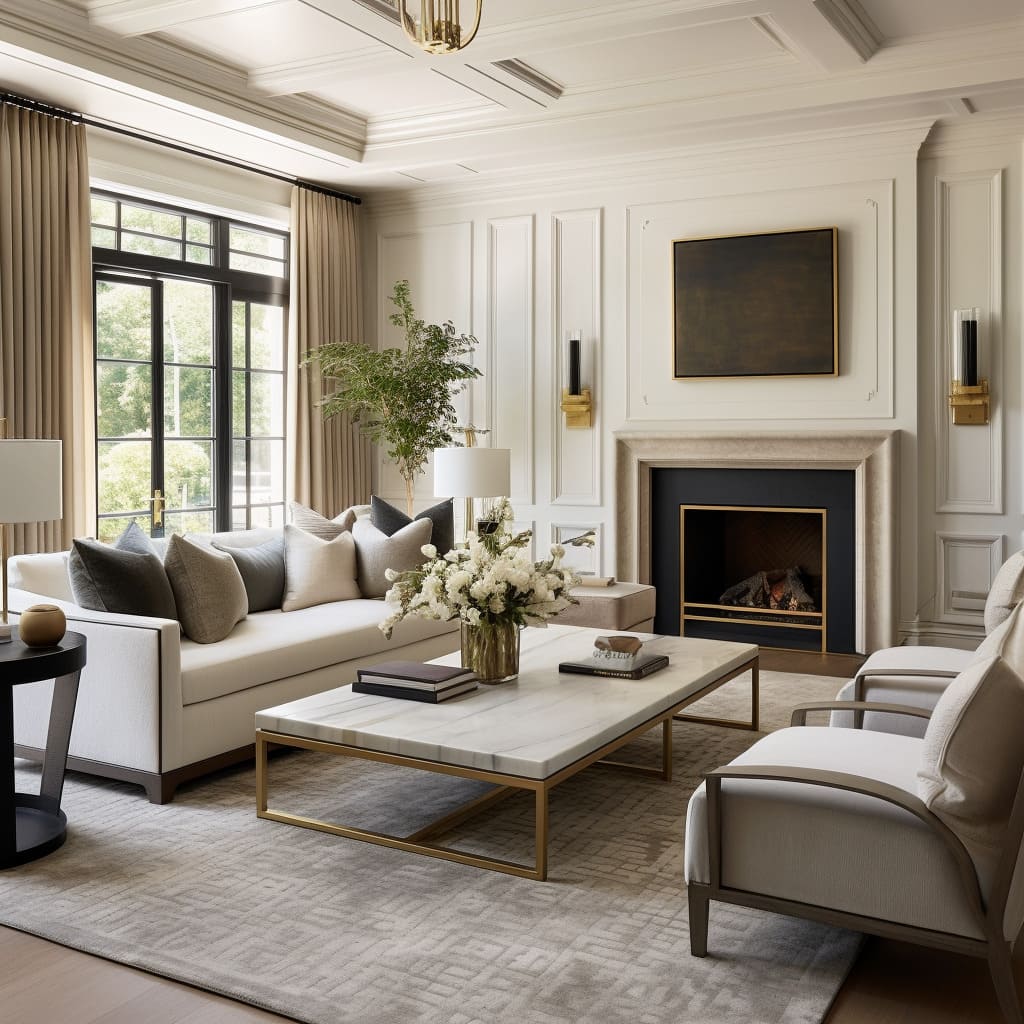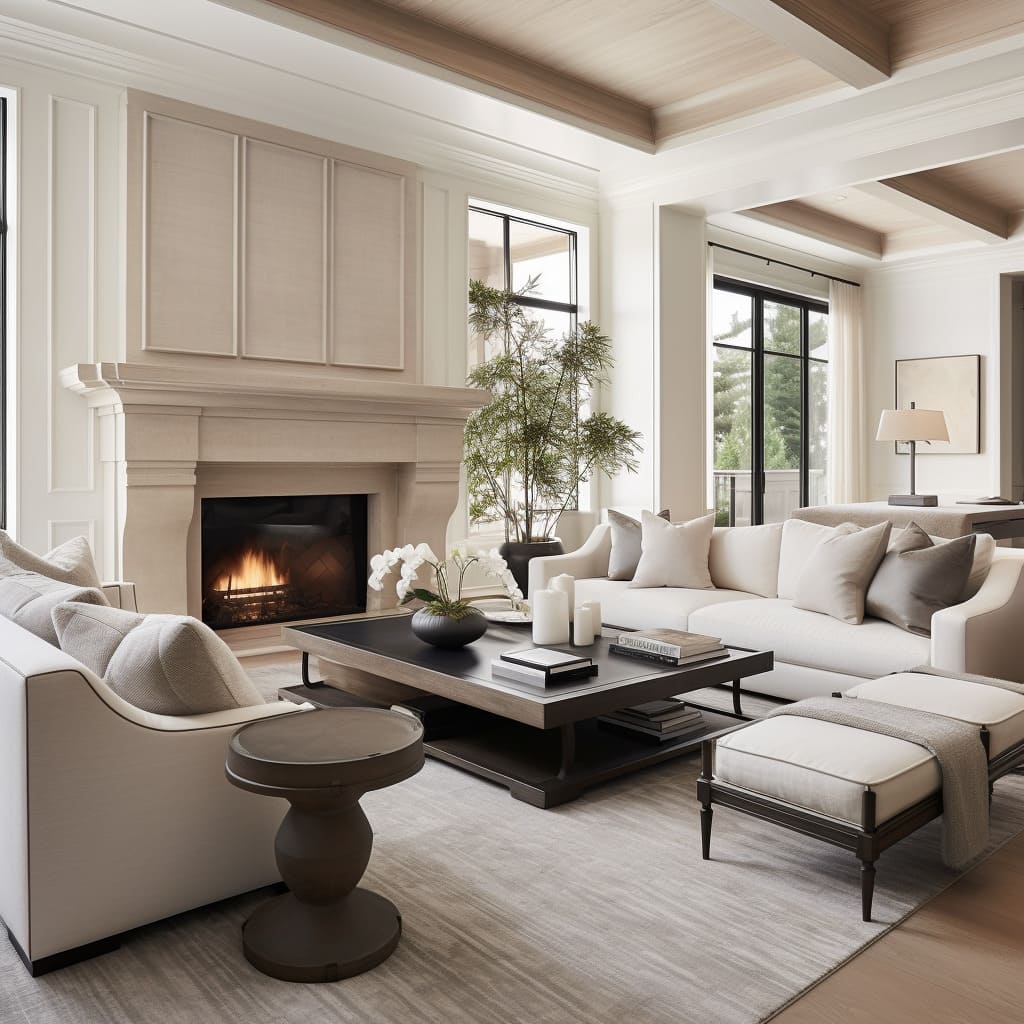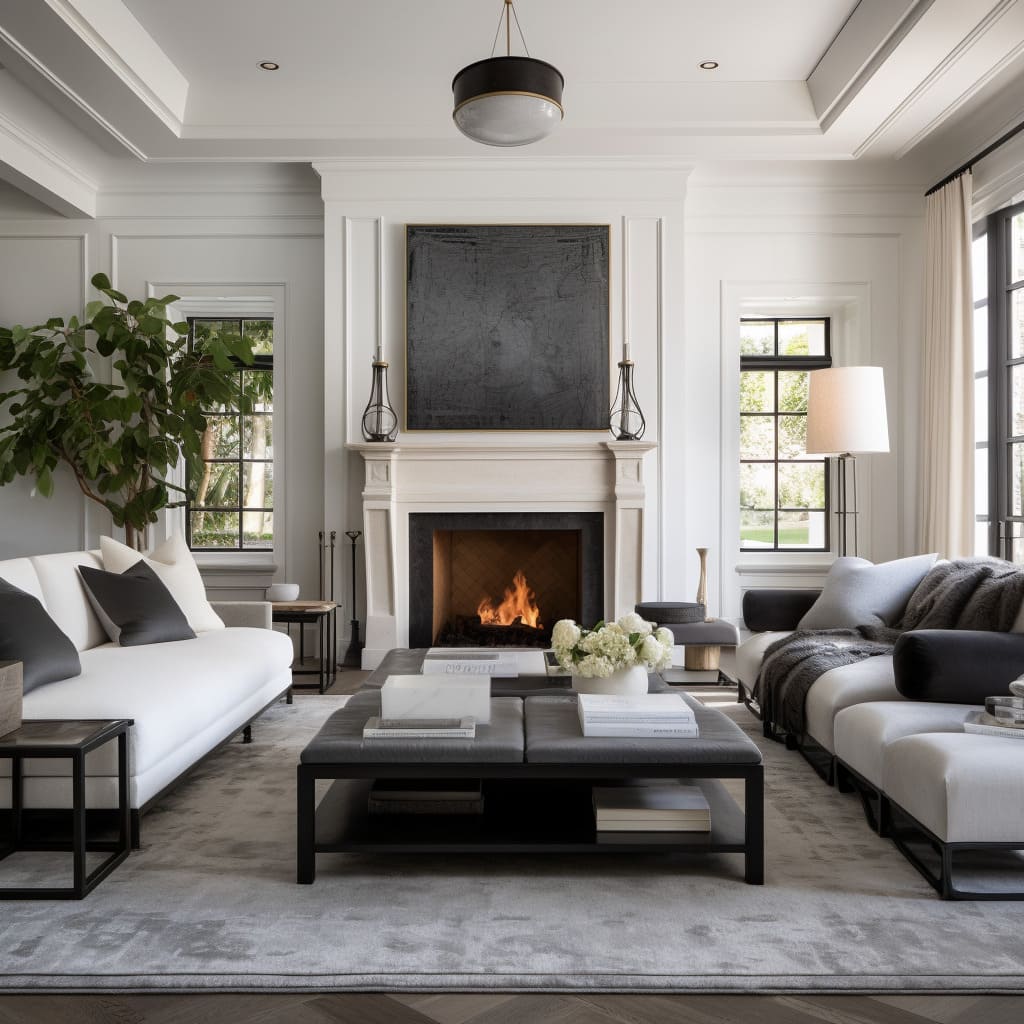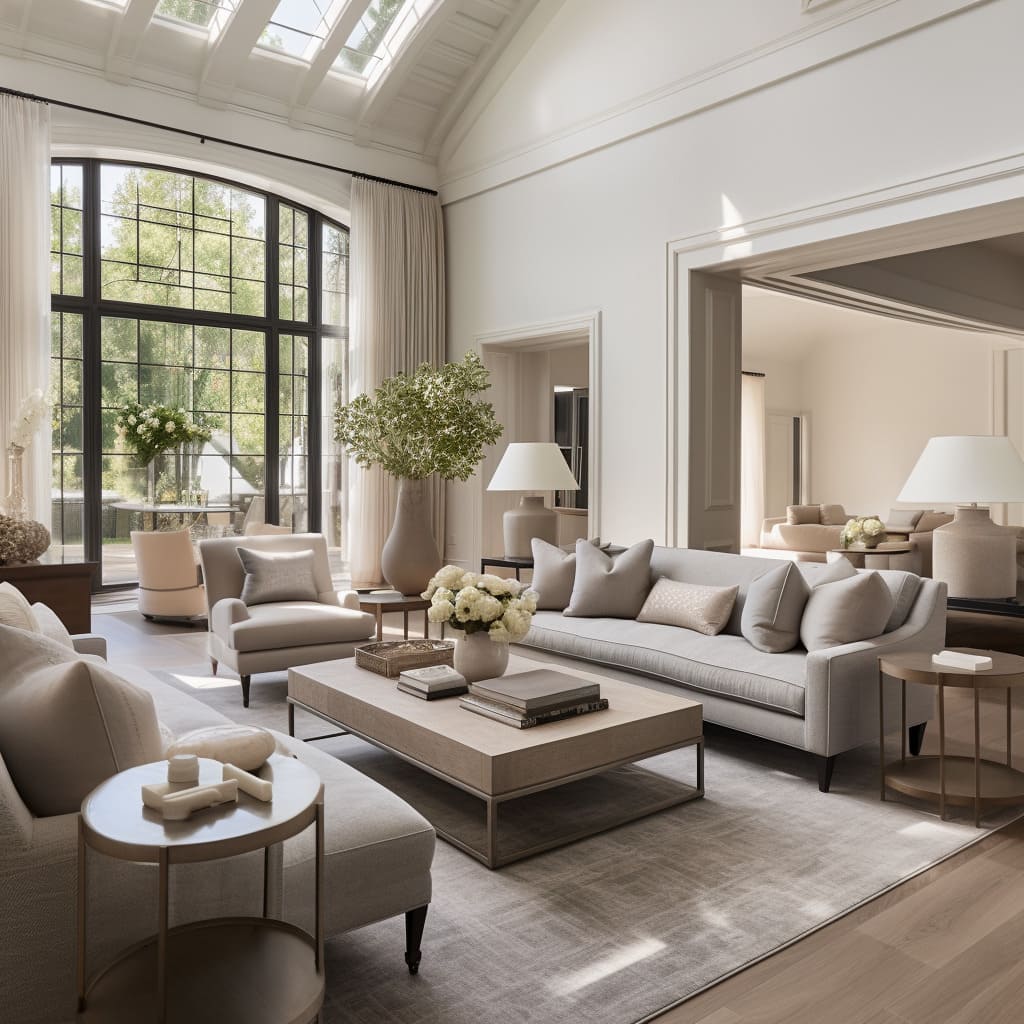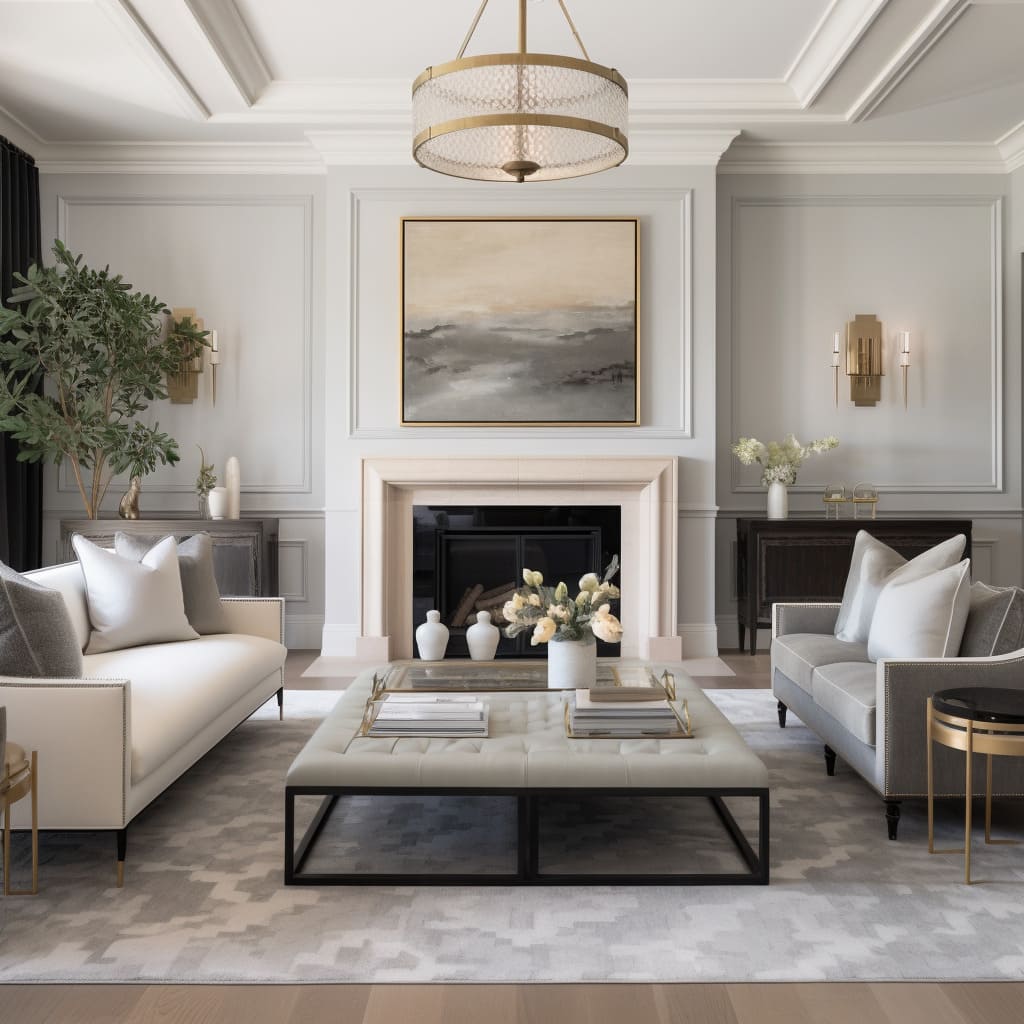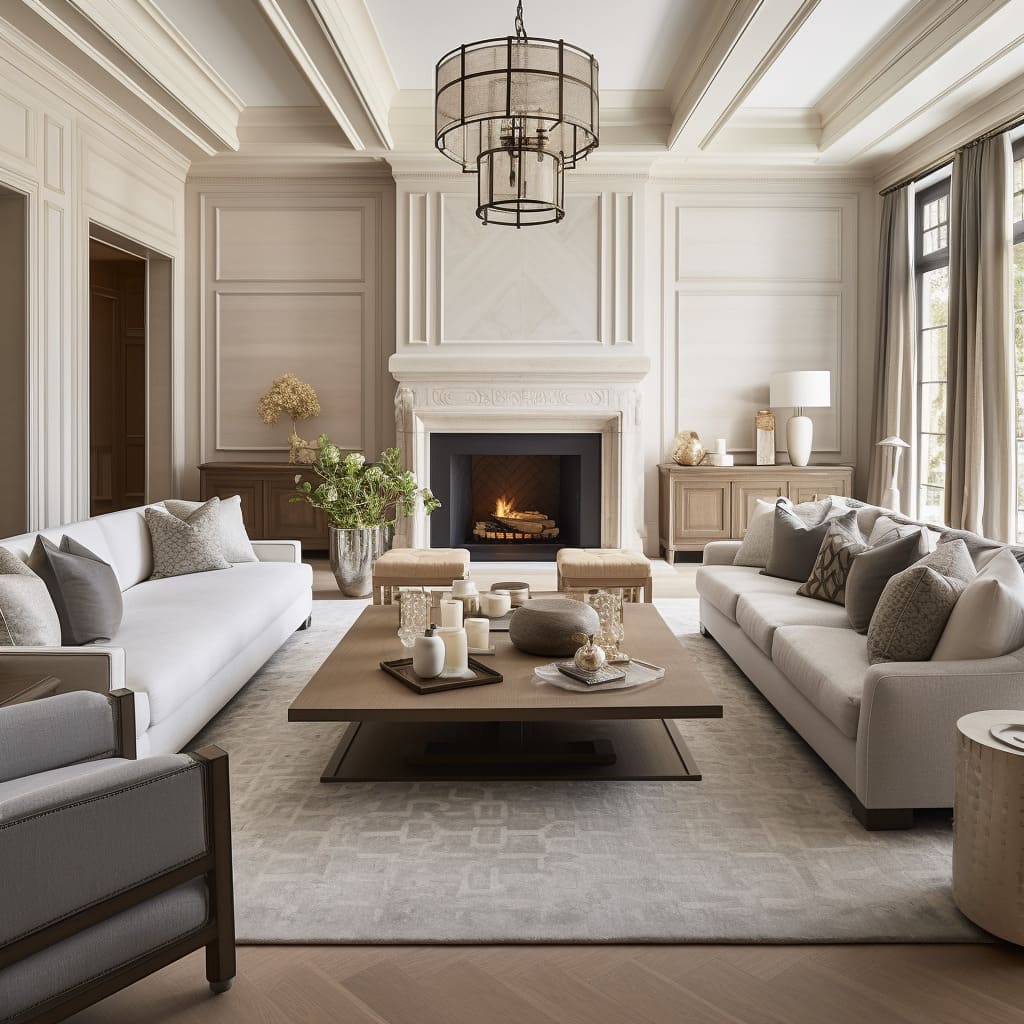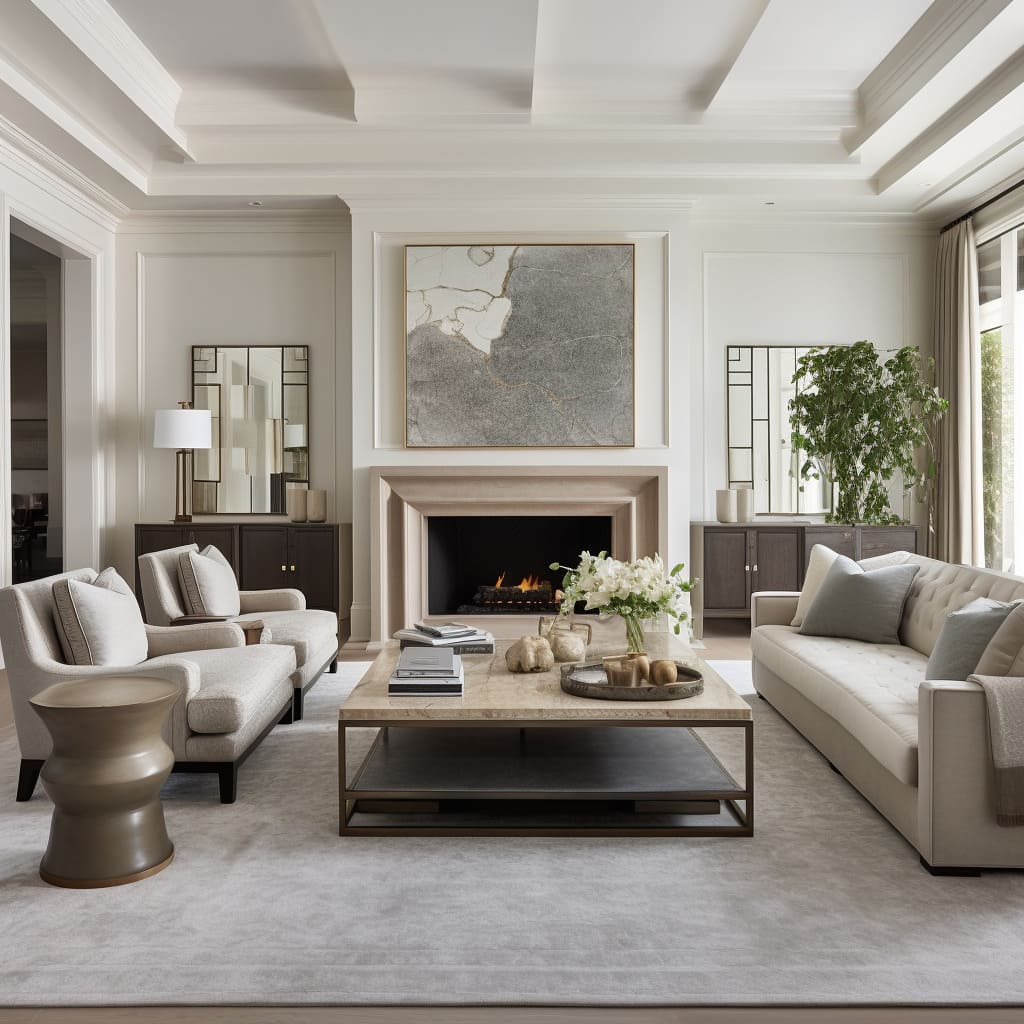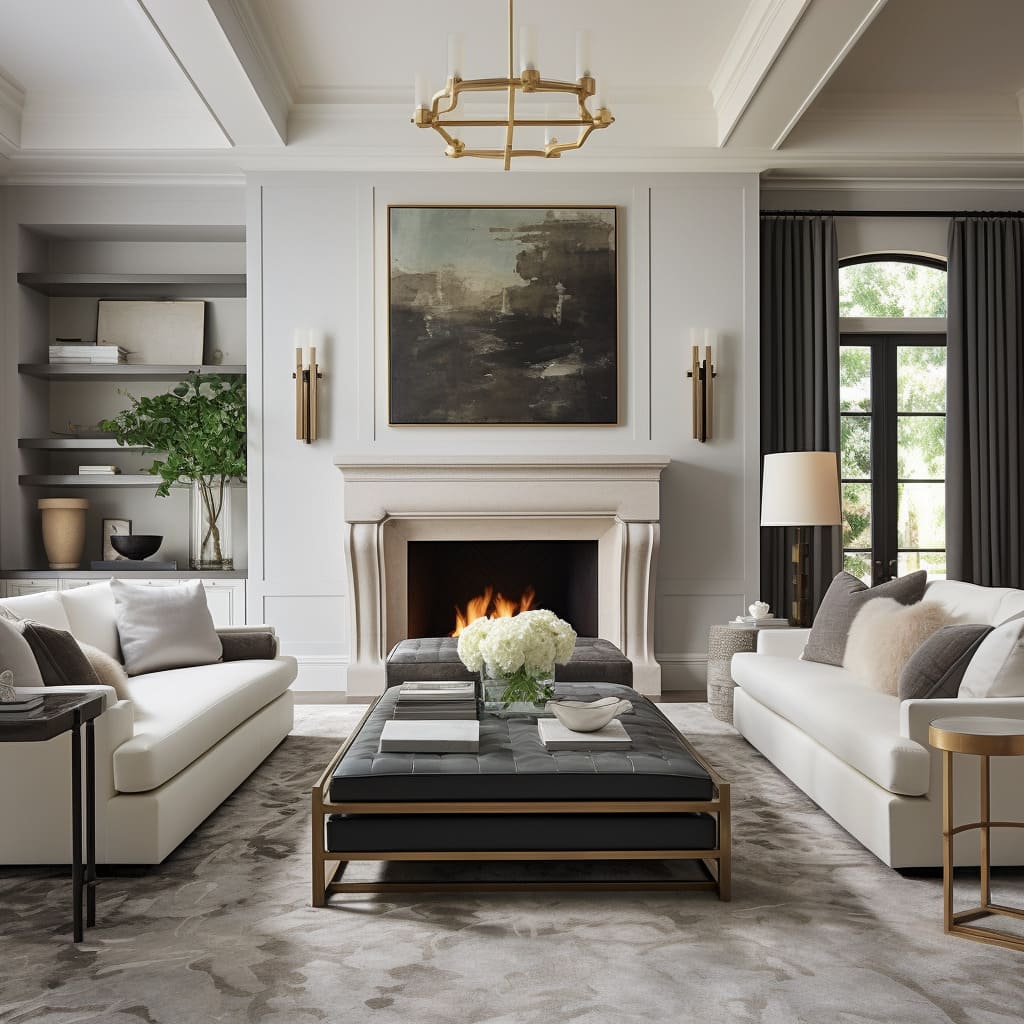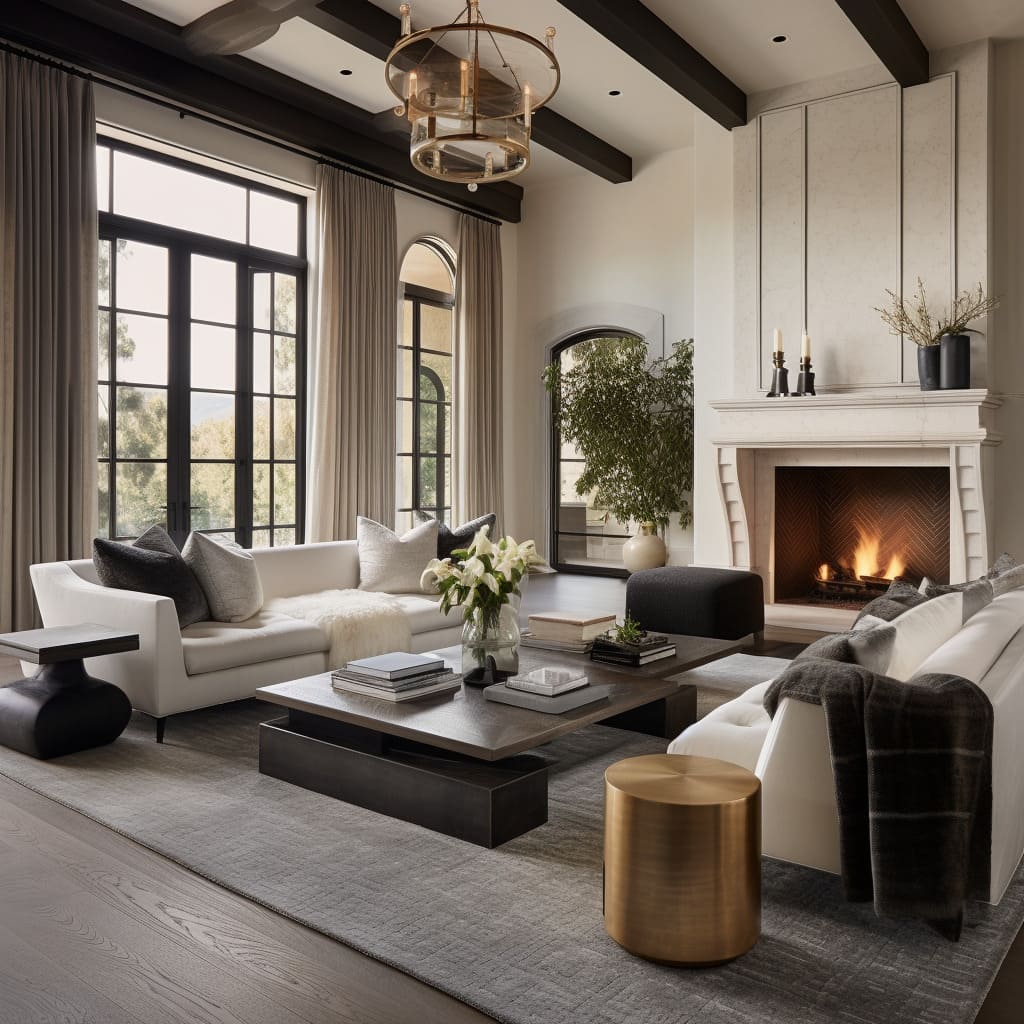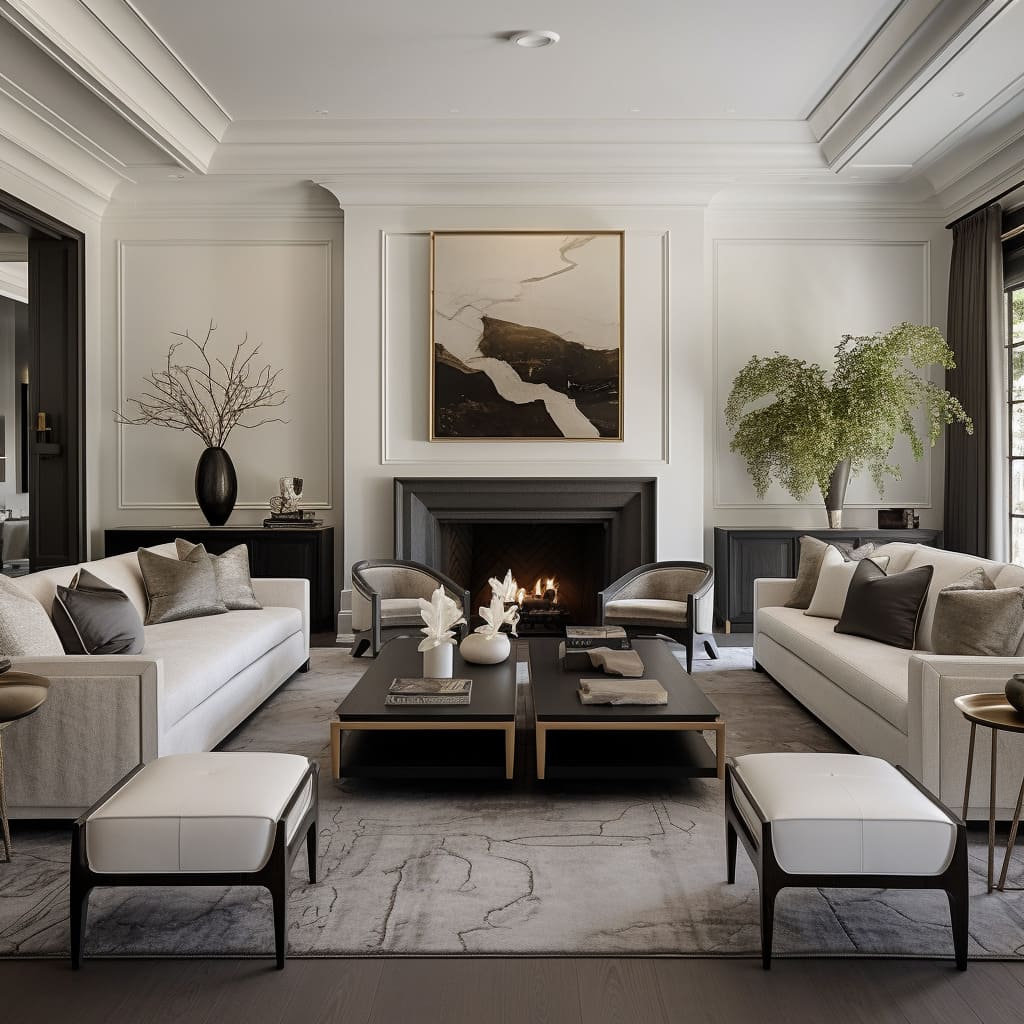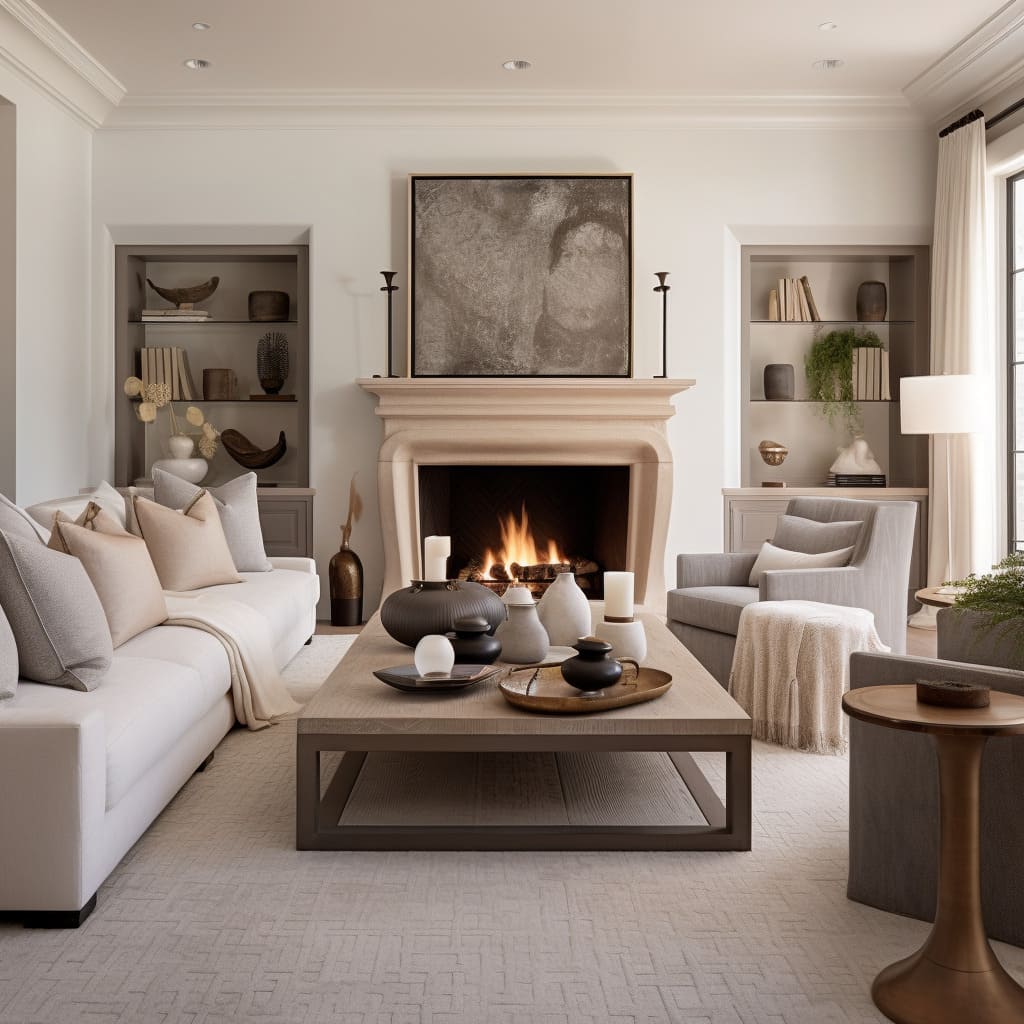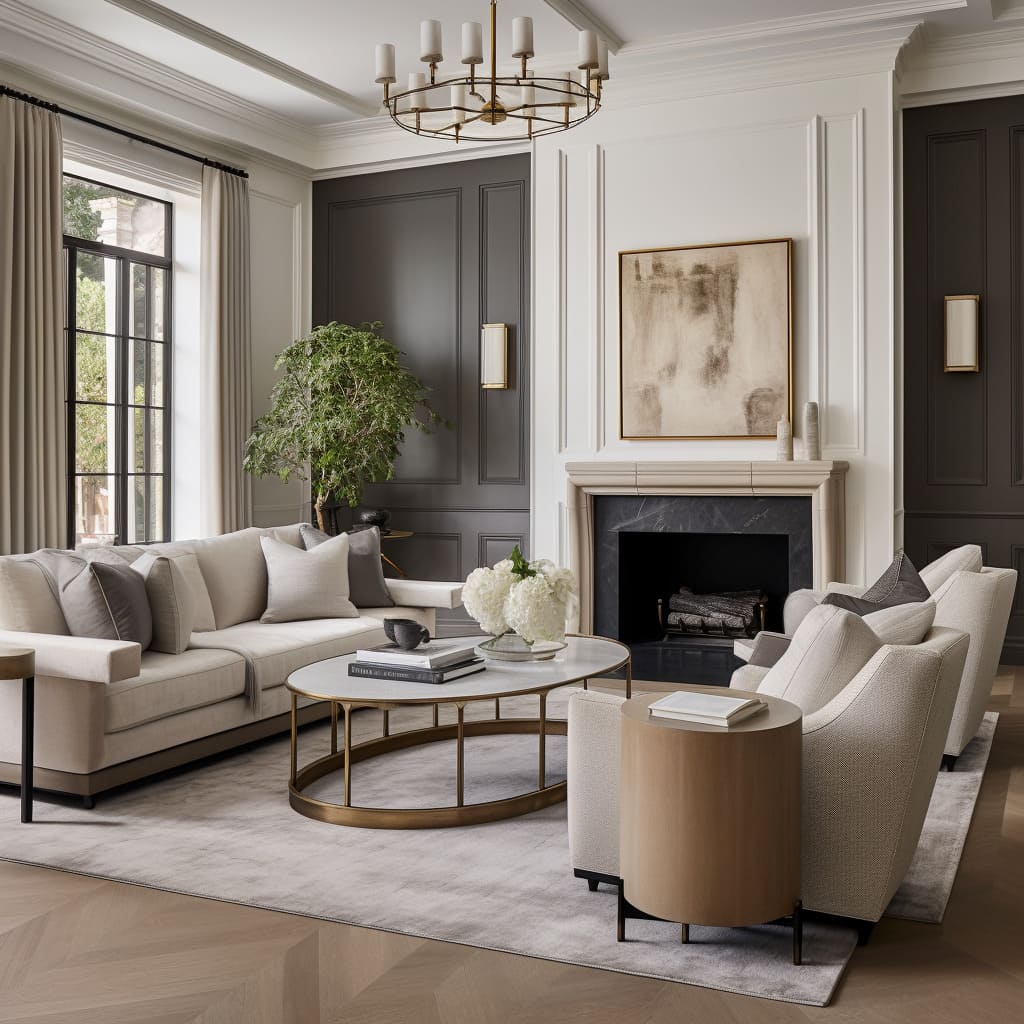Transitional interior design emerges as a captivating style that masterfully blends the warmth and familiarity of traditional decor with the clean lines and minimalist approach of contemporary design. This unique fusion creates spaces that are both timeless and modern, offering a versatile aesthetic that appeals to a wide range of tastes.
At the core of transitional design is the principle of balance – a thoughtful mix of textures, materials, and color palettes that harmonizes the classic with the modern. This design approach is about finding the middle ground, where elegant furnishings meet sleek accents, and luxurious details coexist with simplistic forms.
It’s a style that respects the beauty of tradition while embracing the simplicity and sophistication of the present.
In this article, we explore the key elements that define transitional interior design. From the nuanced use of neutral colors to the strategic blend of varied materials and textures, each aspect of this style contributes to creating spaces that are not only aesthetically pleasing but also immensely comfortable and inviting.
Whether it’s a living room, bedroom, or dining area, transitional design offers a framework that adapts to personal tastes while maintaining a cohesive and elegant look.
Join us as we delve into the world of transitional design, uncovering the secrets to creating spaces that are both timeless and trendsetting, where every element comes together to create a harmonious and sophisticated home environment.
What Value Can You Unlock with Your Current Budget?
Find out what your budget allows you to accomplish by entering your details for a comprehensive look at your options.
Enter values to determine renovation level
Timelessness: The Essence of Transitional Interior Design
Transitional interior design masterfully combines traditional and contemporary elements to create a luxurious yet timeless environment. This design style is characterized by its harmonious blend of classic and modern, bringing together the best of both worlds.
Neutral Palette and Ambient Lighting: The foundation of this design lies in its color palette, predominantly featuring shades like beige, taupe, and grey. These colors lend an air of calm and understated elegance.
Natural light plays a crucial role, illuminating the space and accentuating its openness, while table lamps cast a soft, welcoming glow, enhancing the room’s warmth.
Sophisticated Furniture and Thoughtful Layout: Central to the design is a sophisticated seating arrangement, boasting plush, upholstered sofas and armchairs with clean lines and textured fabrics. A striking dark wood coffee table, adorned with gold metal accents, anchors the space.
The furniture is strategically placed to encourage interaction and comfort, often centered around a fireplace, creating an inviting focal point.
The Fireplace: A Blend of Tradition and Modernity: The fireplace, often featuring a classic stone surround coupled with a modern firebox, draws the eye as a key focal point. It is flanked by minimalist mantel decorations and elegant wall sconces, balancing both function and aesthetics.
Customized Storage and Decor: Built-in shelving units, harmonizing with the room’s color scheme, offer both storage and display spaces for books and decorative items. These elements contribute to the room’s unique, bespoke feel.
Diverse Textiles and Layered Textures: The room’s charm is further enhanced by a diverse range of textiles, from the velvet of the furniture to the silk and linen of throw pillows. An area rug with a subtle pattern and heavy window drapery add layers of texture, enriching the space without overpowering it.
Accents and Artwork: Accents like mirrored trays, sculptural pieces, and potted plants infuse personality into the room. The artwork, subtle yet impactful, complements the room’s sophisticated atmosphere.
Symmetry and Balance: This design style emphasizes symmetry and balance, arranging furniture and decor to create a harmonious environment. Yet, it cleverly incorporates asymmetrical elements to add interest and a designer’s touch.
Harmonizing Materials and Textures in Transitional Design
Transitional interior design skillfully merges varied materials and textures to create a space that is both elegant and comfortable. This approach is particularly evident in the way different elements are combined to achieve a cohesive and sophisticated look.
Diverse Material Selection: A key feature of this style is the artful combination of different materials. Smooth stone in the fireplace contrasts with the textured wood in shelving and metal accents of the coffee table.
The inclusion of glass, mirrored surfaces, and metal elements injects a contemporary feel while retaining a classic aesthetic.
The Beauty of Wood: Wooden elements, like shelving units and coffee tables, highlight the natural allure of wood. Shelves often feature painted hardwood, smooth and timeless, while the coffee table may showcase dark-stained wood with a visible grain, adding depth and a natural touch.
Elegant Metal Accents: Metal details throughout the room offer a modern twist to the softer decor. A coffee table with a brass or gold-finished metal frame adds a luxurious gleam.
Similarly, lamp bases and sconces with metallic finishes not only reflect light but also elevate the room’s sophistication.
Luxurious Upholstery: The upholstered sofas and armchairs, central to the room’s comfort, are covered in high-quality fabrics. These range from soft chenille or velvet to structured weaves, inviting tactile interaction and enriching the sensory experience.
Textural Contrast in Rugs: The area rug is a subtle yet crucial textural element. Its understated pattern adds visual and tactile diversity, enhancing the room’s comfort and aesthetic appeal.
Varied Textures in Accessories: Throw pillows and drapery introduce additional textures. Pillows vary from shiny to plush, contributing visual and tactile variety without overwhelming the space.
Heavy drapery frames the windows, adding a luxurious touch.
Incorporating Natural Elements: Natural elements like floral arrangements and potted plants introduce organic textures, adding vibrancy and bridging the indoor-outdoor gap.
Detailing in Flooring and Ceiling: Hardwood floors, possibly oak or another high-quality wood, bring warmth, while detailed ceiling work, including crown molding and potentially a coffered design, adds architectural texture.
Artwork and Decorative Accents: Art and decorative items are chosen for their textural qualities, complementing the room’s color scheme and enhancing its layered look.
Achieving Balance and Cohesion: Despite the variety of materials and textures, there’s a harmonious balance. Each piece contributes to a unified style, blending diverse textures within a cohesive design.
The Overall Impression: The living room’s materials and textures reflect a sophisticated yet accessible design philosophy. This transitional style successfully combines the comfort and warmth of traditional materials with the sleek, modern textures, creating a space that’s both visually striking and genuinely livable.
Conclusion: The Transitional Design Ethos
In conclusion, transitional interior design stands as a testament to the harmony that can be achieved when traditional and contemporary styles converge. This approach, exemplified in the thoughtful blend of materials and textures, celebrates the elegance of classic design while embracing the simplicity and sophistication of modern aesthetics.
At the heart of this design philosophy is a commitment to creating spaces that are not only aesthetically pleasing but also deeply comfortable and functional. The use of neutral color palettes, diverse materials, and varied textures all contribute to spaces that feel both refined and inviting.
From the luxurious touch of velvet upholstery to the natural warmth of wooden elements, every detail is curated to enhance the living experience.
The true success of transitional design lies in its versatility and timelessness. It provides a canvas that is adaptable to individual tastes and evolving trends, ensuring that spaces remain relevant and enjoyable for years to come.
Whether through the subtle elegance of a plush area rug or the architectural beauty of detailed ceiling work, transitional design captures a unique balance that appeals to a wide range of preferences.
Ultimately, transitional interior design is more than just a style; it’s a reflection of a lifestyle that values comfort, elegance, and a seamless blend of the old and new. It’s about creating homes that are not just showpieces but spaces where life is lived and memories are made, bridging the gap between the past and the present to create a timeless future.


